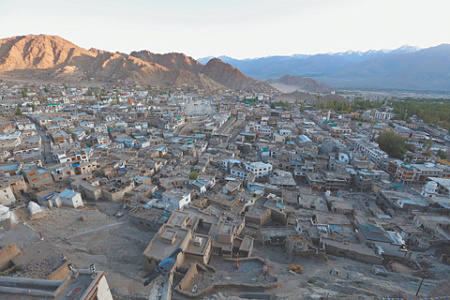
Tensions are once again escalating in Ladakh, the strategic Himalayan region where Indian and Chinese soldiers clashed in 2020. This time, however, the conflict is internal, ignited not by border disputes but by widespread local protests. Thousands of residents have taken to the streets demanding full statehood and greater autonomy after a contentious reform by Prime Minister Narendra Modi’s government placed the region under the direct control of New Delhi.
The unrest in the regional center of Leh began with hunger strikes inspired by Mahatma Gandhi but soon spiraled into violent confrontations. Demonstrators, expressing deep frustration over what they perceive as a loss of identity and power, clashed with police and set fire to an office of Modi’s ruling Bharatiya Janata Party (BJP). The move to make Ladakh a union territory, while intended by the central government to secure a region bordering both Pakistan and China, has instead fueled significant local resentment.
Accounts of the ensuing violence are conflicting. The Indian Ministry of Home Affairs confirmed that police opened fire, resulting in fatalities, but has not released specific numbers, citing self-defense. On the other side, Chering Dorjay, a prominent activist leading the autonomy movement, claimed that five people were killed and at least seventy were injured. This dispute over the facts has only deepened the divide between the local population and government authorities.
As the blame game intensifies, officials in New Delhi have accused protest organizers of intentionally stoking violence, drawing parallels to the Arab Spring. Activists like Dorjay counter that they lost control of a frustrated crowd only after their peaceful demonstrations were ignored. With plans to bring their protests to the capital, New Delhi, the standoff is set to continue, placing further pressure on the Indian government.
The turmoil in Ladakh carries significant implications beyond India’s domestic politics. The region is a critical geostrategic flashpoint, and any internal instability could be exploited by its neighbors, Pakistan and China. The protests risk spilling over into the wider, perpetually volatile Kashmir region, to which Ladakh was historically tied before the 2019 administrative reorganization.
This fragile area has a history of conflict, including the 1999 Kargil War between India and Pakistan, which was fought in the mountains of Ladakh. Today, with India, Pakistan, and China all being nuclear powers and continuing to modernize their militaries, the new wave of internal unrest adds a dangerous layer of complexity. The delicate equilibrium in one of the world’s most heavily militarized frontiers is being tested once more, raising serious concerns about regional stability.
